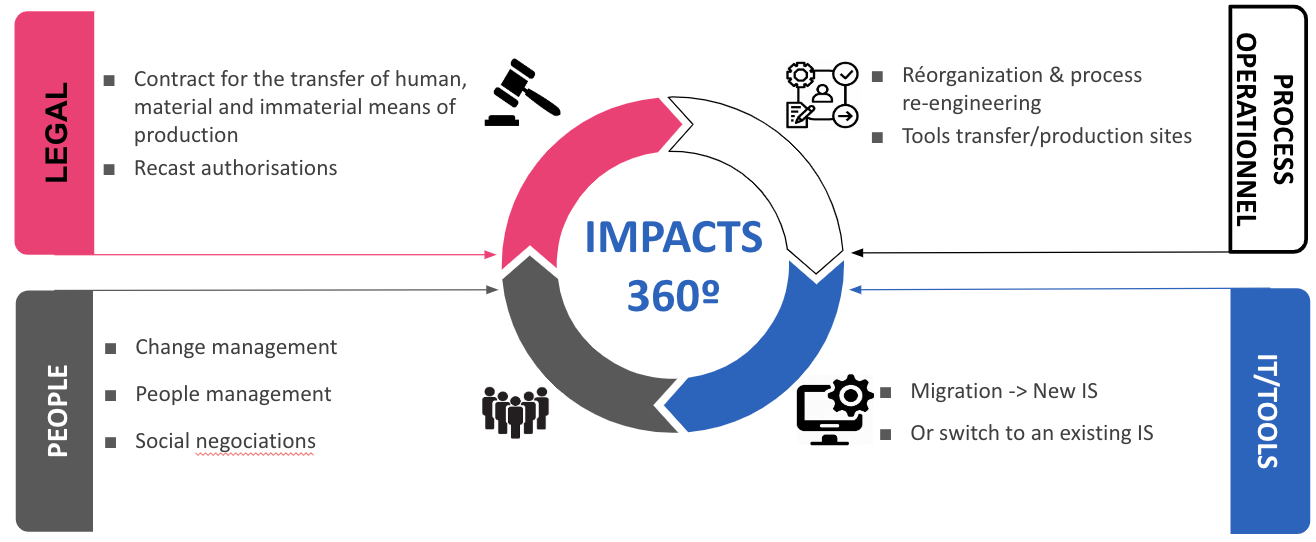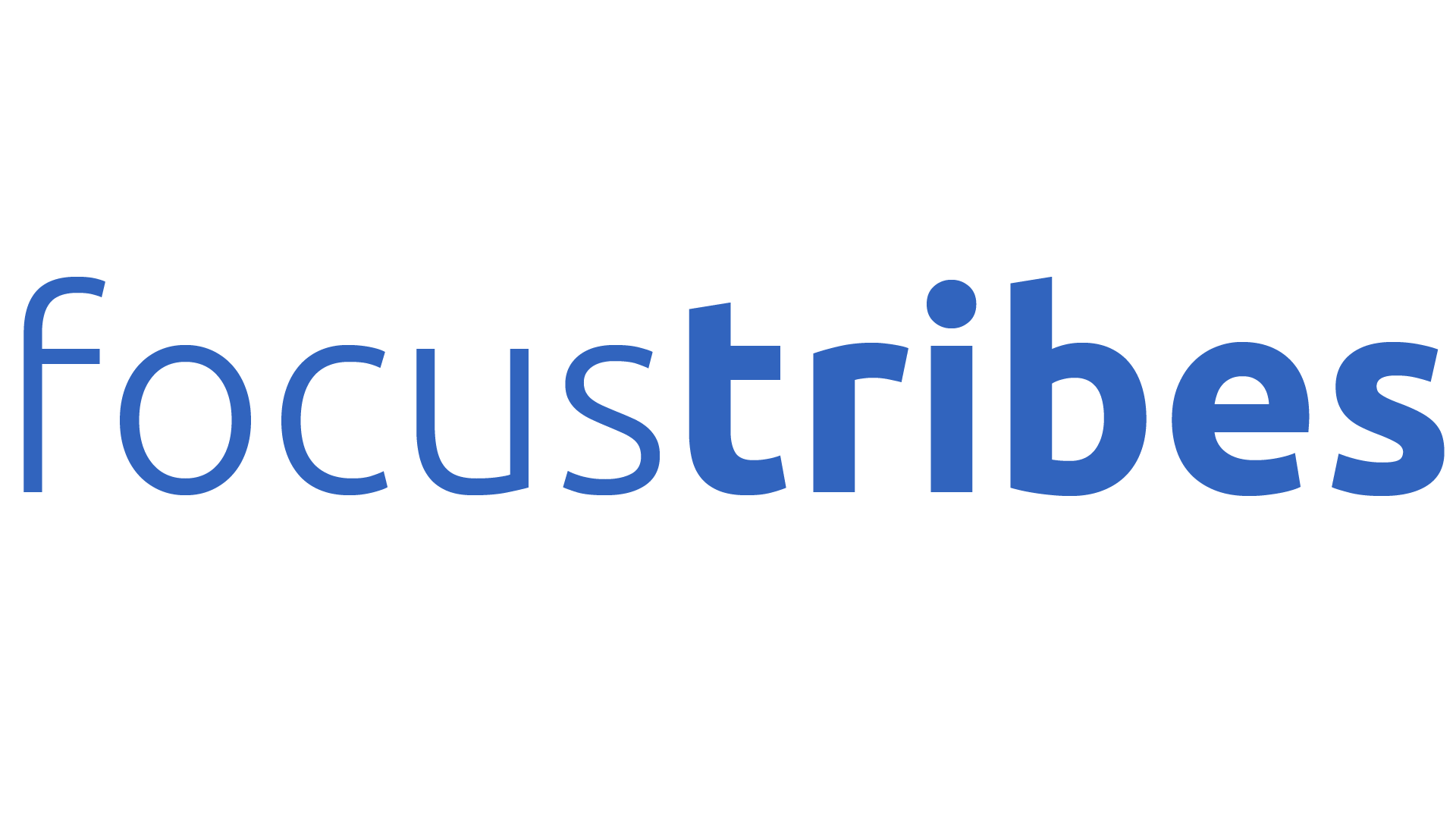A Carve Out project is the sale by a company or a group of companies of a branch of its activity; the Carve In is the opposite operation, which consists of absorbing a new activity. It is an eminently important project, both for the seller and the buyer, because it has a profound impact on companies, confronting them with human, organisational, legal and financial issues. Disruptive, it is a project that can prove to be conflictual if it is not sufficiently anticipated.
Carve In / Carve Out project is based on 4 major pillars :
The Deal: The first stage of the project, the signing of the sale allows the legal and fiscal scope to be defined and the major implications (financial, social, organizational, business, IT) to be identified. This is a crucial stage which raises the first questions of confidentiality. It is essential to involve all the company's functions, as well as the social players and works councils.
Day 1 - Readiness
Preparation of the transitional phase, generally covered by the TSA (Transition Service Agreement). This is an important phase, with a lot of IT involvement to separate the entities and unravel the harmonisations. It should enable the business and IT transitional processes to be defined, the major contracts to be transferred or split to be identified, and the HR negotiations phase to be started.
TSA Execution
During this phase, the selling company continues to provide services on behalf of the buyer, within a time frame determined by the sale agreement. This stage allows the company to prepare for the full Carve-Out, the transfer of the business. It will therefore focus on defining its new processes and preparing for the IT separation.
TSA Exit
This phase marks the complete transfer of the business. All services, data and IT tools are transferred to the buyer.
Main domains of the project
The Carve-in/out project is one of the heaviest projects to manage for a company because it impacts the organisation as a whole. It therefore requires very specific expertise in each of the functional areas (legal, human, business and IT), which may have different strategic issues.

Typical activities of a Carve-in/Out project
All company processes can be covered by the TSA, including the help desk. The duration of the contract must be defined when it is signed, until the company can have its own contracts. This is particularly the case with IT tools. The selling company lends or rents its tools. These contracts are remunerated and objectified via KPIs.
The transition operating model must be ready before Day 1, to define how the company will work during this pivotal period. Once established, the plan must be disseminated across the board. As of Day 1, the company begins drafting the final operating model.
From an IT point of view, the contracts should all be identified when the deal is signed. It is important to look at all the applications, contact the suppliers and ensure that it is possible to split the contract or better still, keep the same contract. This step can be time consuming, especially if the application owners are not clearly identified. Furthermore, user rights must be managed upstream to allow the divested business to function properly. IT issues are closely correlated with the legal and HR departments. Communication needs to start very early as these two departments in particular are not familiar with the project operation.
If there is a risk of unfair competition, especially in terms of price visibility, all authorizations must be reviewed. This can be a difficult activity and needs to be done early on, as the legal department's unfamiliarity with the tools can make it even more difficult.
During a Carve-In/Out, the HRD/HRM must "be in the room". He/she plays a key and pivotal role in the transformation, especially in works council consultations. It is not uncommon to underestimate the importance of working hand in hand with the social players who can facilitate or, on the contrary, block the project. These procedures make the project more cumbersome because the HRD is the only one who can and must have a very clear vision of each stage. He/she must be able to decode and project the social impact (FTEs, legal and organizational structures, functions). Finally, the HRD must ensure coordination with the legal department, on NDA-type contracts (non-disclosure agreement). It is essential that they are very comfortable with these issues. If this is not the case, the company should not hesitate to surround itself with experts.
Main key success factors
Strong governance
More than for any other project, the sponsorship of the HRD and the CFO is essential. Governance must be known, supported, repeated and explained at all levels. It must be accepted by everyone to guarantee adherence to the project. The legal department plays an important role, although it is usually rarely involved in IT transformation projects. Communication can be difficult on both sides. You have to be careful to maintain the dialogue, particularly thanks to the Program Manager and the support of Top Management to steer the IT, business and consultancy aspects. In addition, the company needs key operational contributors to deliver the Carve Out effectively. Finally, the priorities of the transferring and acquiring company are different. Governance must allow for the integration of schedules. It is therefore essential to define the roles of each party to facilitate the project, particularly the management of the schedule.
The commitment of the teams
Essential to guarantee the success of a Carve-In/Out, it begins with the correct identification of the stakeholders, the project management's relays. They will be the actors of change. They will create a feeling of belonging to the new structure. They will be the heart of the transformation thanks to their expertise and their ability to navigate across the organization. It will be essential to ensure that the project actors are fully available. As far as possible, care must be taken to avoid delays, which are often heavily penalized financially, not to mention their impact on interdependent activities.
Integrated planning
For each of the company's functions, the main stages of the project must be defined upstream (Day 1, exit TSA), in agreement with the stakeholders, and assembled in an integrated 360° planning.
The importance of IT
It is necessary to ensure alignment between current application projects and the Carve out/in and possibly reschedule projects that require application modifications that cannot be made in parallel with those necessary for the Carve out/in. Furthermore, IT teams must measure the scope of the data to be migrated in advance and pay attention to the problems of interdependence of the data. Finally, it is necessary to anticipate the organisation of the RUN phase: ticketing tools and processes, support teams, transition phase.
The key role of change management
Communication is essential, throughout the project, to inform teams and identify training needs, particularly regarding new operating models. It is important to ensure that knowledge is transferred between the outgoing and remaining teams. This stage is particularly delicate from a human point of view, hence the importance of anticipating and preparing for it.

